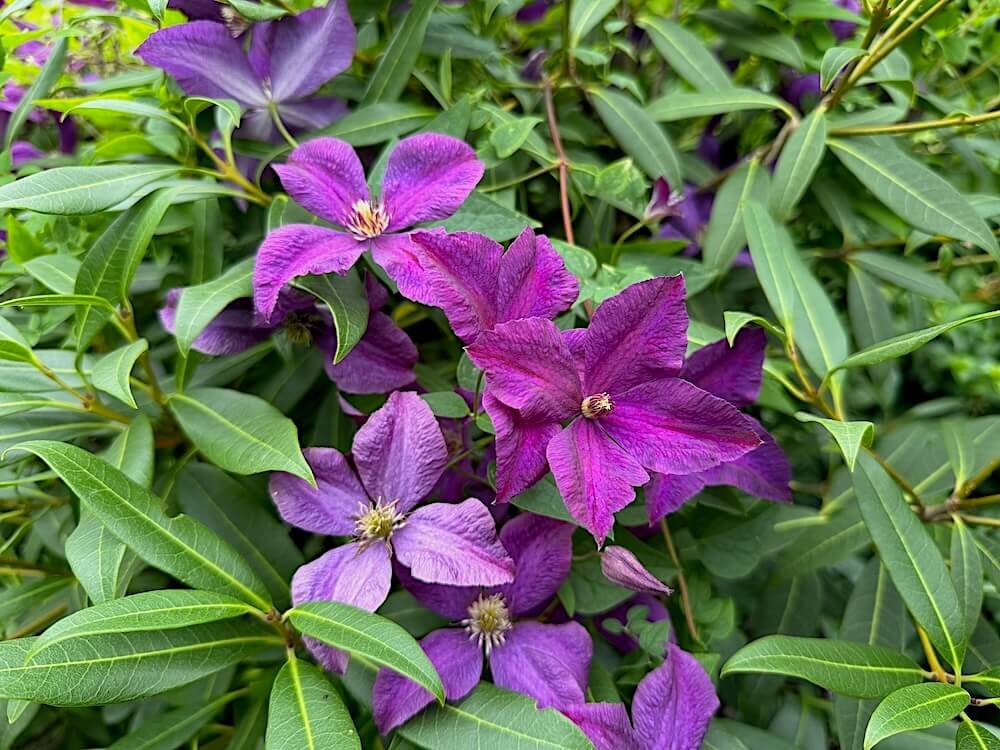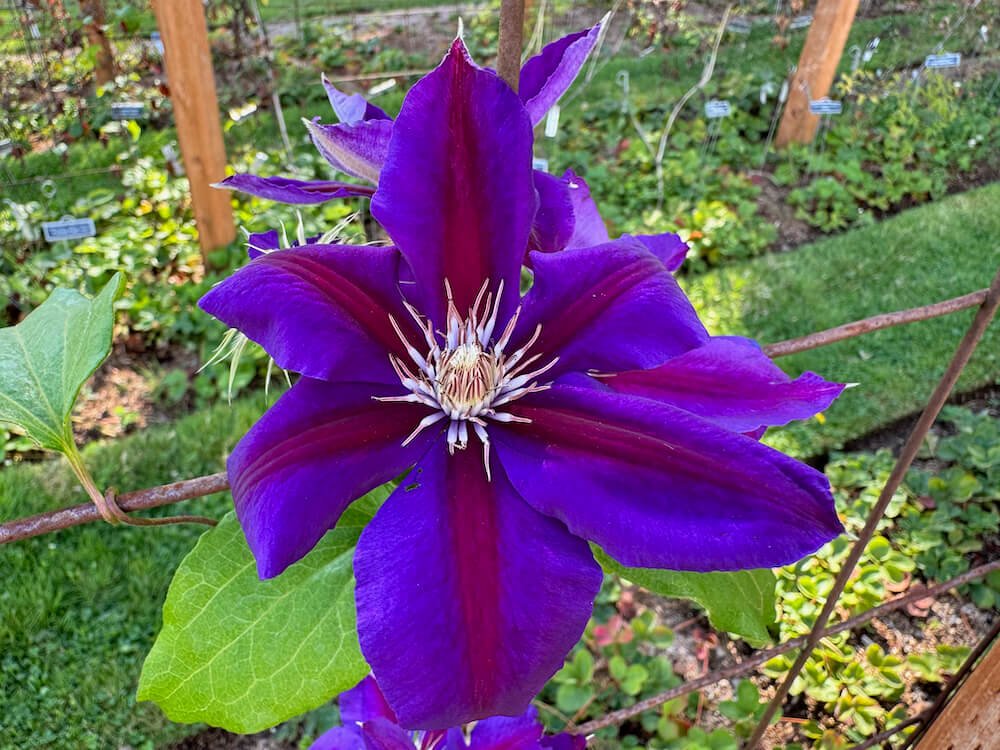DESCRIPTION
Clematis 'Etoile Violette' is a lovely, vigorous, and floriferous climber known for its deep violet-purple blooms. Each flower has four to six broad, velvety petals with a subtle crinkled texture and contrasting yellow stamens at the center, which create a vibrant focal point. It blooms abundantly from mid-summer through early fall, providing a long-lasting display that adds a dramatic touch to gardens, fences, or arbors.
'Etoile Violette' originates from France, where it was bred by Morel in 1885. It has since become a favorite in gardens due to its rich color and easy adaptability to various garden settings. The name translates to "Violet Star," perfectly reflecting the star-like shape and intense color of its flowers.
DESCRIPTION
Clematis 'Etoile Violette' is a lovely, vigorous, and floriferous climber known for its deep violet-purple blooms. Each flower has four to six broad, velvety petals with a subtle crinkled texture and contrasting yellow stamens at the center, which create a vibrant focal point. It blooms abundantly from mid-summer through early fall, providing a long-lasting display that adds a dramatic touch to gardens, fences, or arbors.
'Etoile Violette' originates from France, where it was bred by Morel in 1885. It has since become a favorite in gardens due to its rich color and easy adaptability to various garden settings. The name translates to "Violet Star," perfectly reflecting the star-like shape and intense color of its flowers.














